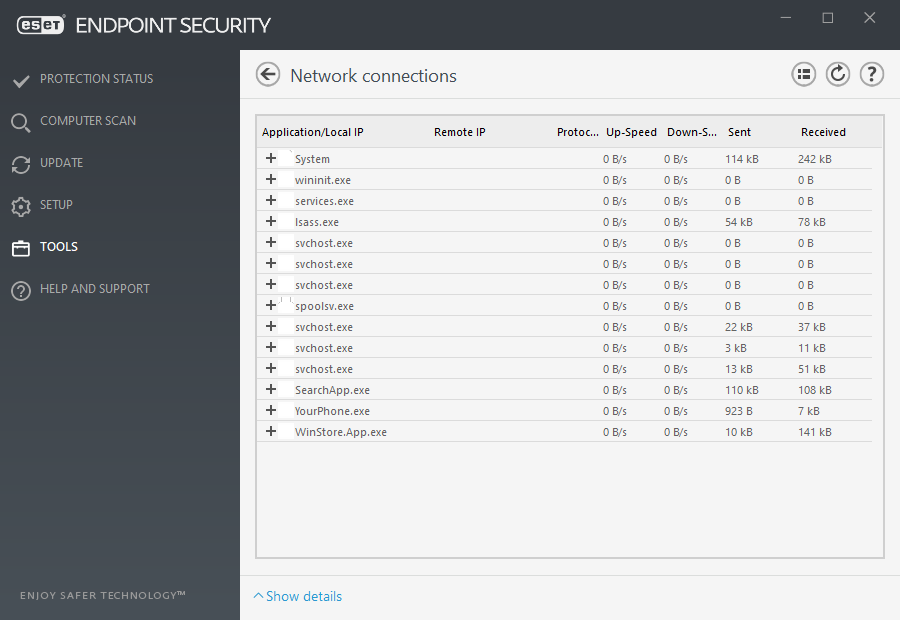Network connections
In the Network connections section, you can see a list of active and pending connections. This helps you control all applications establishing outgoing connections.

The first line displays the name of the application and its data transfer speed. To see the list of connections made by the application (and also more detailed information), click +.
Columns
Application/Local IP – Name of application, local IP addresses and communication ports.
Remote IP – IP address and port number of the particular remote computer.
Protocol – Transfer protocol used.
Up-Speed/Down-Speed – The current speed of outgoing and incoming data.
Sent/Received – Amount of data exchanged within the connection.
Show details – Choose this option to display detailed information about the selected connection.
Select an application or IP address in the Network connections screen and right-click on it will show context menu with following structure:
Resolve host names – If possible, all network addresses are displayed in DNS format, not in the numeral IP address format.
Show only TCP connections – The list only displays connections which belong to the TCP protocol suite.
Show listening connections – Select this option to only display connections, where no communication is currently established, but the system has opened a port and is waiting for a connection.
Show connections within the computer – Select this option to only show connections, where the remote side is a local system – so-called localhost connections.
Right-click on a connection to see additional options that include:
Deny communication for the connection – Terminates the established communication. This option is available only after clicking on an active connection.
Refresh speed – Choose the frequency to refresh the active connections.
Refresh now – Reloads the Network connections window.
The following options are available only after clicking on an application or process, not an active connection:
Temporarily deny communication for the process – Rejects current connections for the given application. If a new connection is established, the firewall uses a predefined rule. A description of the settings can be found in the Rules and zones section.
Temporarily allow communication for the process – Permits current connections for the given application. If a new connection is established, the firewall uses a predefined rule. A description of the settings can be found in the Rules and zones section.
